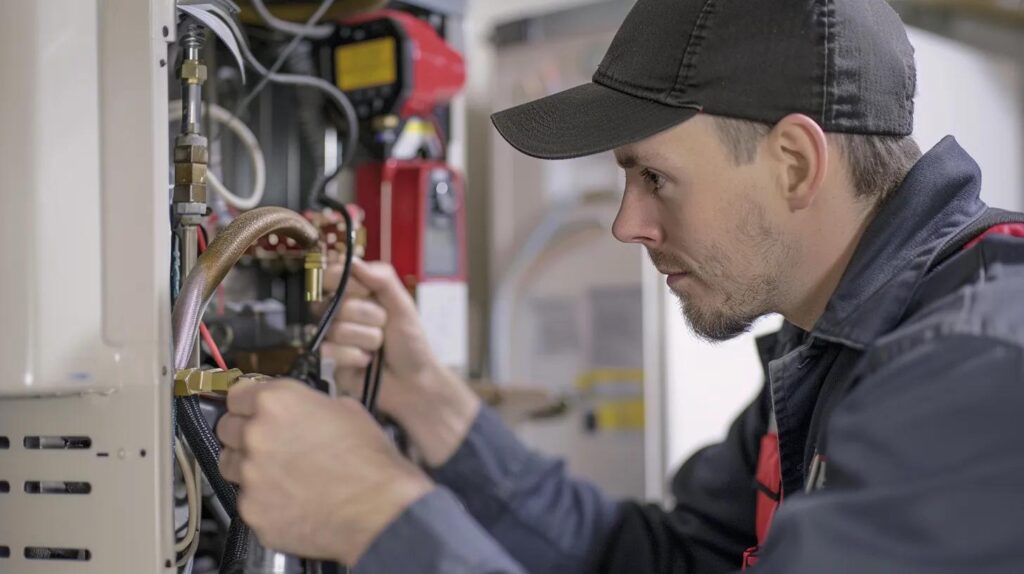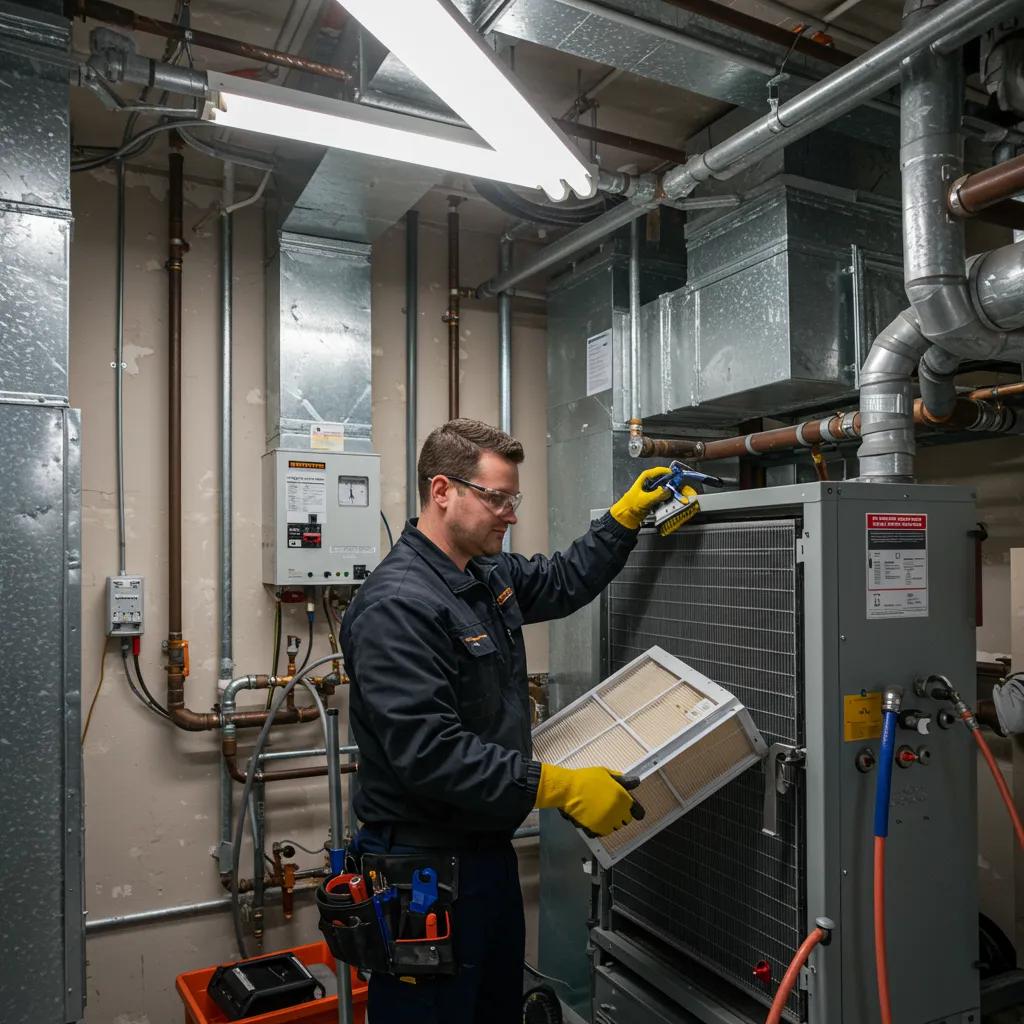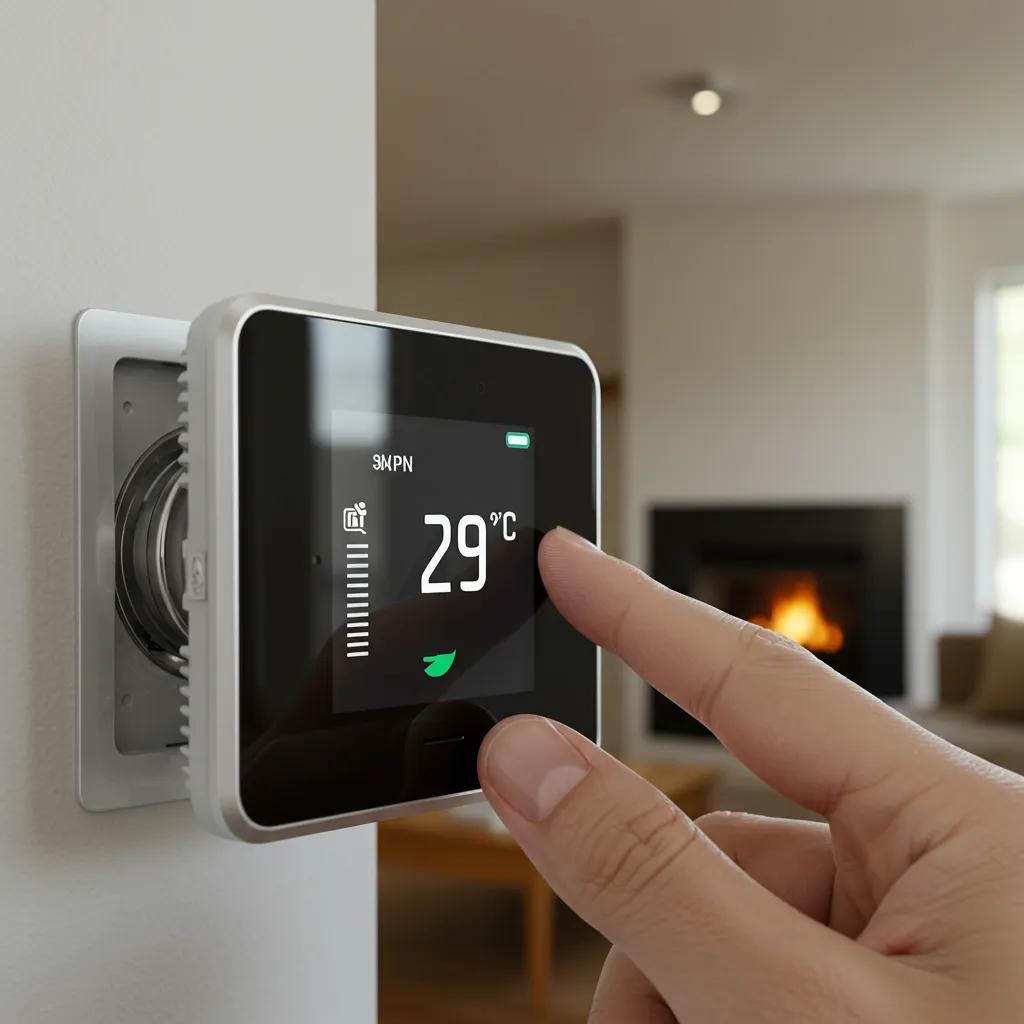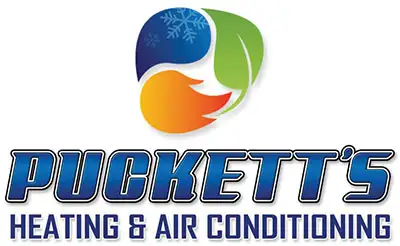
Slash Utility Bills with High-Efficiency HVAC Systems
When it comes to your home’s biggest expenses, your utility bills are likely at the top of the list. That’s where energy-efficient heating, ventilation, and air conditioning (HVAC) systems come in. By fine-tuning performance and cutting down on wasted energy, today’s advanced HVAC solutions can help you save up to 20 percent on your annual energy costs. This guide will walk you through the key advantages of installing energy-efficient HVAC systems, the maintenance needed to keep those savings rolling, the upgrades that offer the best bang for your buck, smart control strategies, complementary home improvements, local incentives in Maryland and Delaware, and how these systems benefit commercial properties. Throughout, you’ll see how Puckett’s Heating & Air’s expertise in installing high-efficiency heat pumps, Energy Star equipment, smart thermostats, and comprehensive maintenance plans can lead to lasting cost reductions, greater comfort, and a lighter environmental footprint.
What Are the Key Benefits of Energy Efficient HVAC Systems for Lower Utility Bills?
Energy-efficient HVAC systems bring together top-notch components and smart control strategies to use less energy while keeping your home consistently comfortable. By reducing the amount of electricity or fuel needed to reach your desired temperatures, homeowners and small businesses can see immediate savings on their utility bills. For instance, swapping out an old air conditioner that’s about 10 years old for a new, high-SEER model can cut your cooling costs by 15-25 percent. Understanding these benefits shows just how crucial strategic HVAC upgrades and regular maintenance are for long-term savings, no matter the season.
How Does Energy Efficiency Lower Heating and Cooling Bills?
Energy efficiency lowers your bills by cutting down on the energy your system needs to maintain the perfect temperature, minimizing waste during operation, and maximizing its output. Here’s a quick rundown of how it saves you money:
- High-SEER Components: Advanced compressors and variable-speed motors adjust their output based on your actual needs, so they don’t have to run at full power all the time.
- Improved Insulation and Sealing: Better insulation and sealed ductwork prevent your conditioned air from escaping, meaning your system doesn’t have to run as much.
- Smart Control Algorithms: Programmable and learning thermostats fine-tune your temperature settings and schedules to use less energy during peak times.
Each of these features helps reduce how long your system runs or how much energy it uses, leading to real financial savings and paving the way for environmental benefits.
What Environmental Benefits Come from Energy Efficient HVAC?
Energy-efficient HVAC systems help reduce greenhouse gas emissions because they use less electricity and fuel to heat and cool your spaces. This decreased demand means less reliance on power plants that burn fossil fuels, leading to lower carbon dioxide output.
Here are some of the key environmental advantages:
- Lower Carbon Footprint: You can see a reduction of up to 20 percent in CO₂ emissions from your heating and cooling activities.
- Reduced Peak Demand: By smoothing out electricity usage, these systems ease the strain on the power grid during busy summer and winter periods.
- Improved Air Quality: When your system is running optimally, it filters out more particles, contributing to cleaner air inside your home.
By cutting energy consumption right at the source, efficient HVAC systems contribute to cleaner air and a healthier planet, naturally leading to better comfort and a longer-lasting system.
How Do Energy Efficient Systems Improve Home Comfort and System Lifespan?
Energy-efficient HVAC systems keep your indoor temperatures steady by adjusting their power output gradually, rather than constantly cycling on and off. This prevents uncomfortable temperature swings and reduces the mechanical stress on your system’s components. For more information, consider looking into why AC compressor is making unusual sounds.
Comfort and durability are boosted through:
- Precise Temperature Control: Variable-speed compressors and multi-stage furnaces maintain consistent conditions throughout your home.
- Reduced Wear and Tear: Fewer on/off cycles mean less strain on your compressor and motors, extending their lifespan.
- Quieter Operation: Lower fan speeds and better insulation mean your system runs more quietly.
This stable, gentler operation leads to happier occupants and a longer-lasting system, making efficiency upgrades a smart investment.
Which Rebates and Tax Credits Help Reduce HVAC Upgrade Costs?
Government incentives can make upgrading to an energy-efficient HVAC system much more affordable by helping to cover the costs of equipment and installation.
| Program | Incentive Type | Typical Benefit |
|---|---|---|
| Inflation Reduction Act (IRA) | Federal tax credit | Up to 30 percent of system cost, capped at $1,700 |
| Maryland Energy Administration | State rebate | $300–$600 for high-efficiency heat pumps |
| Energize Delaware | State rebate | $200–$500 for ENERGY STAR air conditioners |
| Local Utility Efficiency Funds | Rebate or bill credit | $50–$150 per qualifying upgrade |
These programs lower your initial investment, helping you recoup the costs of your energy-efficient HVAC project faster and setting you up for ongoing savings through smart maintenance strategies.
How Can Regular HVAC Maintenance Maximise Energy Efficiency and Reduce Utility Costs?
Regular maintenance keeps your equipment running at its best, preventing the efficiency drops that happen over time due to dirt, wear, or improper calibration. Neglected filters, dirty coils, and leaky ductwork can actually increase your energy consumption by 5–15 percent. By setting up a preventive maintenance schedule, you ensure your system operates at peak efficiency, which directly translates into lower utility bills and a longer equipment lifespan.
What Are the Essential HVAC Maintenance Tasks for Energy Savings?

Essential maintenance tasks help eliminate inefficiencies before they lead to higher energy bills or costly breakdowns. Here are the critical steps:
- Filter Replacement: Swapping out filters every 1–3 months prevents airflow blockages and reduces strain on your compressor.
- Coil Cleaning: Keeping evaporator and condenser coils free of debris significantly improves heat transfer efficiency.
- Duct Sealing: Sealing up leaks in your ductwork stops conditioned air from escaping, which can otherwise waste 10–30 percent of your system’s output.
- System Inspection: Professional tune-ups involve adjusting refrigerant and airflow to ensure optimal performance.
Proactive servicing helps maintain your equipment’s designed efficiency and prevents energy-wasting problems from developing.
How Often Should HVAC Systems Be Serviced for Optimal Efficiency?
Servicing your system seasonally aligns with your peak cooling and heating needs, helping to catch any issues before they become problems during high-demand periods. A schedule with two visits per year—one in the spring for cooling and one in the fall for heating—ensures your filters, coils, and controls are optimized year-round. Checking your filters quarterly in between these visits further helps maintain steady airflow and energy consumption.
Regular seasonal tune-ups, combined with quarterly filter checks, create a maintenance rhythm that keeps your system running efficiently and prepared for extreme weather.
How Does Maintenance Extend HVAC System Lifespan and Lower Bills?
Consistent maintenance reduces wear on moving parts, prevents overheating, and ensures the correct refrigerant charge, all of which decrease the chances of expensive repairs or premature failure. By keeping components clean and properly calibrated, your system’s energy draw stays within the manufacturer’s specifications, preventing unexpected spikes in consumption.
Well-maintained systems often last 2–5 years longer than those that are neglected, increasing your return on investment by delaying replacement costs and ensuring sustained utility savings.
What Maintenance Plans Does Puckett’s Heating & Air Offer for Energy Savings?
Puckett’s Heating & Air offers a range of maintenance agreements designed to protect your system’s efficiency and deliver ongoing cost reductions:
- Basic Efficiency Tune-Up: Includes an annual inspection, guidance on filter replacement, and basic coil cleaning.
- Comprehensive Performance Plan: Features two visits per year, full diagnostic testing, coil and duct cleaning, and thermostat calibration.
- Priority Service Agreement: Includes all Comprehensive plan services, plus priority scheduling and no-charge trip fees.
Every plan comes with free performance estimates and flexible financing options to make ongoing maintenance affordable and ensure it consistently drives down your utility costs.
Which Energy Efficient HVAC Upgrades Provide the Best Return on Investment?
When choosing HVAC upgrades, focus on the components that offer the biggest efficiency improvements for their cost. Equipment that reduces runtime, enhances heat transfer, or utilizes advanced controls will provide measurable savings and quicker payback periods.
How Do Heat Pumps Reduce Utility Costs Compared to Traditional Systems?
Heat pumps work by transferring heat rather than generating it, making them two to four times more efficient than traditional electric or gas furnaces. By moving heat using electricity, modern air-source heat pumps can cut your annual heating and cooling energy usage by up to 30 percent. Heating services in Easton can optimize your system.
This method reduces fuel consumption when heating and uses highly efficient cooling cycles, ensuring year-round savings and environmental benefits.
What Are the Benefits of High-SEER Air Conditioners and Energy Star Furnaces?
High-SEER air conditioners and ENERGY STAR certified furnaces are equipped with variable-speed compressors, advanced heat exchangers, and superior insulation to minimize energy consumption. Key advantages include:
- Cooling bills that are up to 25 percent lower compared to standard units.
- Improved humidity control for greater comfort.
- Compliance with strict energy standards, which may qualify you for additional rebates.
These benefits combine to lower your monthly bills and enhance your home’s comfort during both summer and winter.
Adopting seasonal efficiency metrics and robust minimum efficiency standards are vital for promoting high-efficiency air conditioners.
Energy-Efficient Room Air Conditioners: Best Available Technology
The most efficient air conditioning units are split systems incorporating a variable frequency drive (VFD). The market share of variable-speed air conditioners is increasing in both Europe and India. These units are more efficient under part-load conditions compared to fixed-speed (on/off) appliances and can maintain a more stable room temperature. In India, the efficiency metric for variable-speed air conditioners (SEER / HSPF) accounts for part-load conditions, whereas a standard for part-load measurement is currently being developed in Europe. The adoption of seasonal efficiency indicators, stringent minimum efficiency standards, and an effective energy label are crucial for promoting high-efficiency air conditioners. Energy Efficient Room Air Conditioners: Best Available Technology, 2016
How Does Proper HVAC Sizing Impact Energy Efficiency and Costs?
Ensuring your HVAC equipment is correctly sized means its capacity perfectly matches your home’s heating and cooling needs. This avoids oversizing, which can lead to short-cycling (frequent on-off cycles), and undersizing, which forces the system to run constantly. Proper sizing improves energy efficiency by maintaining steady run times and reducing those energy-draining on/off cycles, which also lessens wear and tear on the components. For information on installation, refer to ductless installation easton md.
Accurate load calculations and professional system design guarantee that your installed system operates within its optimal performance range, maximizing your projected savings.
What Financing Options and Promotions Are Available for Energy Efficient Upgrades?
Financing and promotional offers allow you to spread the cost of your investment over manageable payments, making it easier to adopt high-efficiency HVAC solutions.
| Option | Structure | Typical Terms |
|---|---|---|
| Manufacturer Deferred Financing | 0 percent interest for up to 18 months | Equal monthly payments |
| Local Utility Zero-Interest Loans | Interest-free loan | Repayment up to 5 years |
| HVAC Service Provider Promotions | Reduced installation fees | Seasonal discounts up to 15 percent |
| Energy Efficiency Grant Programmes | Partial cost reimbursement | $300–$1,000 per project |
These options help reduce financial barriers and encourage investment in efficiency upgrades that quickly lead to lower utility expenses.
How Do Smart Thermostats and Advanced Controls Help Reduce Home Energy Consumption?
Smart thermostats and zoning controls fine-tune your HVAC system’s operation by matching its output to your actual occupancy and comfort needs. By learning your habits, adjusting temperatures remotely, and controlling different areas independently, these advanced controls prevent unnecessary energy use and deliver significant year-round savings.
What Features of Smart Thermostats Optimise HVAC Energy Use?
Smart thermostats optimize performance through several key features:
- Programmable Scheduling: Automatically adjusts temperatures based on your daily routines.
- Adaptive Learning: Analyzes occupancy and weather data to refine temperature settings.
- Remote Management: Allows you to control your home’s temperature from your smartphone, even when you’re away.
- Usage Reports: Provides insights into your energy consumption and offers personalized tips for efficiency.
Each of these features helps reduce wasted runtime and improves your system’s responsiveness, creating a more predictive approach to energy management.
How Can Zoning Systems Improve Energy Efficiency and Comfort?
Zoning systems divide your home into different areas, each with its own thermostat and dampers, allowing for independent temperature control. This approach directs heating and cooling only where and when it’s needed, cutting down on energy waste in unoccupied areas. Zoning systems can reduce overall HVAC energy use by up to 30 percent while simultaneously boosting comfort in the areas you use most.
Targeted temperature control through zoning balances efficiency with occupant preferences, directly contributing to a longer system life and lower utility bills.
What Are the Typical Energy Savings from Smart Thermostat Installation?
Installing a smart thermostat typically results in 6–10 percent savings on your annual heating and cooling bills. By moving away from fixed schedules and minimizing energy use during peak times, households can save an average of $75–$125 per year, depending on local energy rates.
These quantifiable benefits clearly show how intelligent controls translate into real-world cost reductions and contribute to better environmental performance.
How Does Puckett’s Heating & Air Support Smart Thermostat Installation?

Puckett’s Heating & Air provides expert smart thermostat integration services. This includes checking system compatibility, professional wiring, user training, and ongoing support. Every installation comes with an energy-use analysis and custom programming to ensure you achieve maximum savings right from the start.
This comprehensive approach makes adopting new technology simple and guarantees lasting efficiency gains for all our clients.
What Home Improvements Complement HVAC Efficiency to Further Reduce Utility Costs?
Optimizing your home’s structure ensures your HVAC system works efficiently within a well-sealed and insulated building, rather than fighting against heat loss or gain through walls, windows, and ductwork. Complementary improvements enhance your home’s overall energy performance and accelerate the savings from your HVAC upgrades.
How Does Home Insulation Prevent Heat Loss and Gain?
Proper insulation in your walls, attic, and crawlspaces creates a thermal barrier that significantly reduces heat transfer. By minimizing temperature differences between the inside and outside, insulation cuts down on your HVAC system’s runtime and energy usage. Upgrading to materials with a high R-value can reduce your heating and cooling energy consumption by 10–15 percent.
Effective insulation works hand-in-hand with an efficient HVAC system, preparing your home for advanced control strategies.
Why Is Air Sealing and Ductwork Sealing Important for HVAC Efficiency?
Air sealing and duct sealing prevent conditioned air from escaping through tiny gaps, cracks, and poorly connected joints. Sealing these leaks can stop 20–30 percent of air leakage, ensuring that every bit of energy used to condition your air contributes to your comfort instead of being lost.
A tightly sealed home complements efficient equipment by preserving the system’s output and reducing unnecessary cycles.
Conclusion
Investing in high-efficiency HVAC systems not only leads to significant savings on utility bills but also enhances indoor comfort and reduces environmental impact. By understanding the benefits of energy-efficient upgrades and regular maintenance, homeowners can make informed decisions that yield long-term financial and ecological rewards. Take the next step towards a more efficient home by exploring our range of HVAC solutions tailored to your needs. Contact Puckett’s Heating & Air today to learn how we can help you achieve optimal energy savings and comfort.


